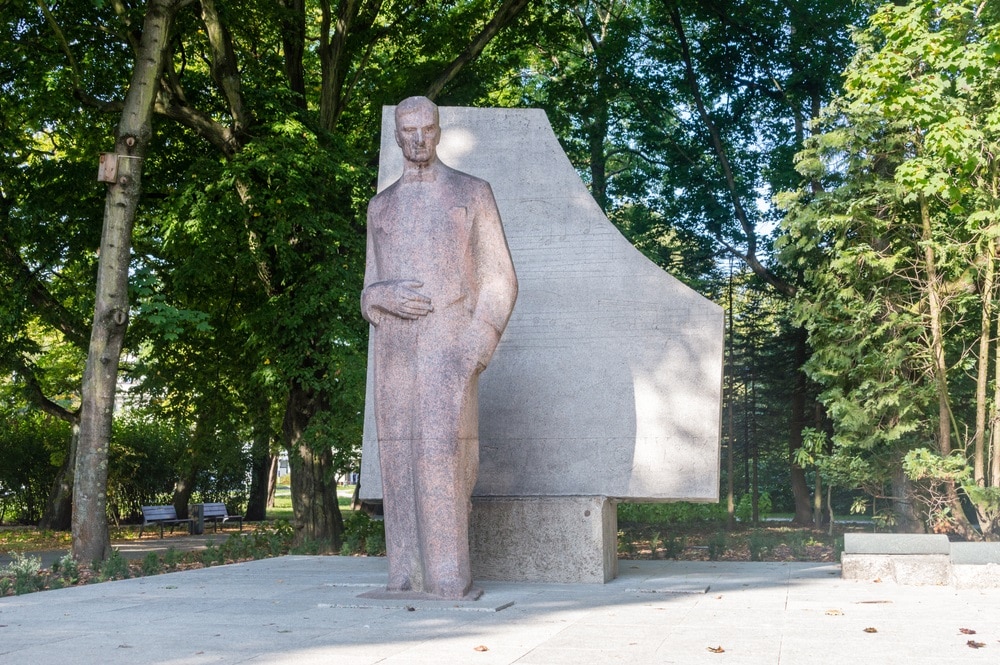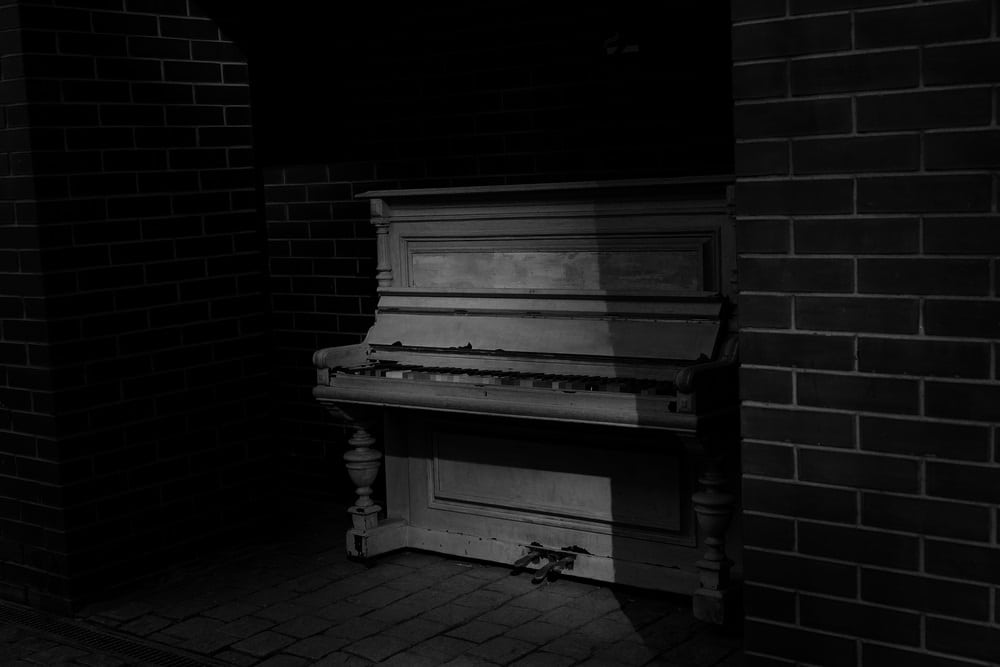
Before plunging headlong into the composers themselves, let’s pause and take a brief look at what microtonal music is.
For the best part of over four hundred years, Western musical culture has orientated its harmonic principles around what came to be known as the tonal system of keys. It was a natural development of the older modal systems and has endured right up to the present day.
The tonal system is based on the octave being equally divided into twelve parts. This forms the chromatic scale. Each of these divisions effectively has a key and key signature.
An illustration of this could be the note ‘D,’ which can be the tonic note for both a D major and a D minor scale. Each scale is created according to an agreed set of intervals (or gaps between notes) that make scales major, minor, pentatonic, and so on.
Microtonal Composers in Classical Music
With the change to a tonal system of keys came new harmonic rules that governed music up until the collapse of tonality around the time of Richard Wagner.
At this point, the tonal system had become so chromatic that the idea of having a tonal centre dissolved. Up until then, composers worked within these tonal frameworks. Some of the best examples of this are perhaps found in the works of Joseph Haydn or W.A. Mozart.
According to the conventions adopted by composers during the Classical period, music would have a key, F major for example, which would be considered to be the tonic; the tonal centre.
If F major was the chosen key, then its dominant would be C major. Entire works would orientate around these gravitational harmonic points that served to bring cohesion to compositions.
Naturally, composers did not limit themselves to these rules but, as all innovative composers do, sought to bend and break them, creating some of the most remarkable compositions of their time.
Historical Context
As music traveled into the 20th century, composers drew influences from the ever-shrinking world. Travel made it possible for composers to hear music from different cultures.
This brought with it new sonorities and structures that had not been available to Western composers before. One key event was the Great Exhibition of 1899 in Paris, which saw a whole gamut of new cultural experiences on offer.
French composer Claude Debussy first heard a gamelan orchestra perform at the exhibition, which strongly influenced his music.
These influences and the advent of cheaper travel meant that world music could be heard, analyzed, and begin its journey into Western culture.
One key aspect of many types of world music is that the division of the octave is not approached in the same way as composers did in the early part of the 17th century.
Instead, other composers and musicians throughout other parts of the world divided the octave into as many as 22 parts.
In Indian music, for example, there are 7 swara (in English: do, re, mi, fa, so, la, ti), 12 swara-prakaar (like our octave but with different intervallic relationships), and 22 shruti (based more closely on the harmonic series).
Early Microtonal Experiments
There are many more examples of music that is essentially microtonal from around the world, and this was an inspiration to Western composers. This experimentation in music does date back further in time than you might first anticipate.
Polish composer Karol Szymanowski (1882-1937) cleverly employed quarter-tones in his Myths. Ferruccio Busoni (1866-1924) made several experiments with microtonality, and perhaps better known, American composer Charles Ives (1874-1954) was a pioneer when it came to new approaches to harmony.
Characteristics of Microtonality
When we’re considering microtonality, we are thinking about subdivisions of our well-established octave. As jazz pianist Thelonious Monk once aptly described it, playing the notes between the notes. You can appreciate that on a piano, you can only play the keys in front of you.
This is not the case when we consider many other instruments. Taking a look, for instance, at the string family of instruments, even though strings are commonly tuned to an agreed pitch, it’s perfectly possible to play the notes between the notes.
Indeed, what you can hear in some performances is the performer deliberately playing slightly under or over a note for expressive reasons.
And, I believe for many microtonal composers, it is the extended expressive possibilities that quarter-tones or eight-tones offer that makes microtonality interesting.
One fascinating microtonal composer who never tired of exploring diverse musical avenues was American Harry Partch (1901-1974). Partch not only extensively composed using microtones but also invented and created his own instruments.
Harry Partch and His Innovations
These instruments are aesthetically appealing in their own right aside from the extraordinary sound they produce. They are the cornerstones of Partch’s compositions.
His Chromelodeon (I), for example, is a radically transformed reed organ that plays a 43-tone octave. Partch’s Adapted Guitar (II) has ten strings tuned to what Partch referred to as either Otonality or Utonality.
These concepts are quite complex and have been subsequently adopted and extended by contemporary composers. In a nutshell, otonality uses a fixed tone from which other pitches are derived.
These can be expressed as ratios along the lines of the harmonic series. Utonality is the inverted version of otonality. What’s more important, perhaps, is the results of this way of approaching sound.
For me, a good entry point into Partch’s amazing array of compositions would be from 1961, Rotate the Body in All Its Planes. Very few composers have taken microtonality as far as Harry Partch. He is virtually unparalleled in his methods and concepts.
Other Key Microtonal Composers
Alois Hába (1893-1973), in a similar way to Harry Partch, composed microtonal music and developed instruments to play it. Hába was strongly influenced by the serial methods of composition of Arnold Schoenberg.
Hába desired to liberate his compositions from the confines of traditional tonality. He drew significant inspiration from Moravian traditional music, adopting its compelling rhythms and microtonality.
Many of his compositions used specially constructed instruments that could produce microtones. Of his collection of compositions, his opera titled Matka (1930) and his athematic opera called Thy Kingdom Come (1940) are fine examples of microtonal works.
Henry Cowell (1897-1965) was another American composer, musicologist, and multi-instrumentalist who considerably furthered the cause of microtonal exponents. Cowell’s deep and lifelong fascination with all things musical began when he was very young.
It became his raison d’etre as he grew, eventually traveling the world as a kind of ambassador for music. World music fused with his creations, and in a similar way to the composers above, Cowell strove to conjure unheard sonorities that bridged cultural divides and prejudices.
Cowell’s piano music of the 1930s paved the way for later composers such as George Crumb and John Cage. His Banshee of 1925 requires anything but a conventional approach to playing the piano. His works contain over 180 startlingly original songs.
In 1929, Cowell’s Piano Concerto has three movements whose titles brilliantly capture his compositional approaches: Polyharmony, Tone Cluster, and Counter Rhythm.
Much of Cowell’s music seamlessly fuses African and Mexican rhythms in addition to traditional Irish music. Influences from Japan, China, and Tahiti are amongst the cultures on which Cowell drew for his compositions.
There are too many works to choose from, but perhaps Thunder Stick (1924), Six Casual Developments (1933), and Ostinato Pianissimo (1934) are enough to get your ears ready for Cowell’s avant-garde world.


I’m looking for Wesley